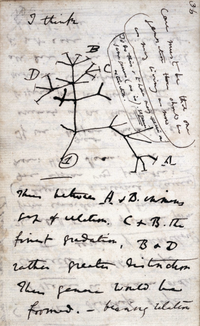
Photo from wikipedia
Prion diseases, also known as transmissible spongiform encephalopathies (TSEs), are a group of neurodegenerative protein misfolding diseases that invariably cause death. TSEs occur when the endogenous cellular prion protein (PrPC)… Click to show full abstract
Prion diseases, also known as transmissible spongiform encephalopathies (TSEs), are a group of neurodegenerative protein misfolding diseases that invariably cause death. TSEs occur when the endogenous cellular prion protein (PrPC) misfolds to form the pathological prion protein (PrPSc), which templates further conversion of PrPC to PrPSc, accumulates, and initiates a cascade of pathologic processes in cells and tissues. Different strains of prion disease within a species are thought to arise from the differential misfolding of the prion protein and have different clinical phenotypes. Different strains of prion disease may also result in differential accumulation of PrPSc in brain regions and tissues of natural hosts. Here, we review differential accumulation that occurs in the retinal ganglion cells, cerebellar cortex and white matter, and plexuses of the enteric nervous system in cattle with bovine spongiform encephalopathy, sheep and goats with scrapie, cervids with chronic wasting disease, and humans with prion diseases. By characterizing TSEs in their natural host, we can better understand the pathogenesis of different prion strains. This information is valuable in the pursuit of evaluating and discovering potential biomarkers and therapeutics for prion diseases.
Journal Title: Viruses
Year Published: 2021
Link to full text (if available)
Share on Social Media: Sign Up to like & get
recommendations!